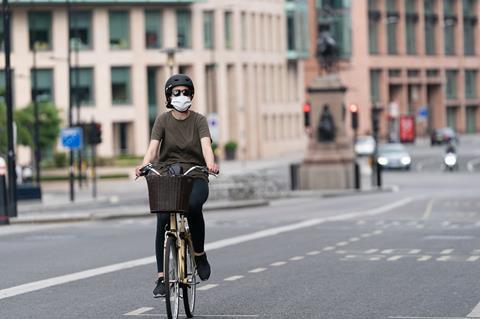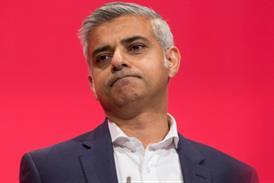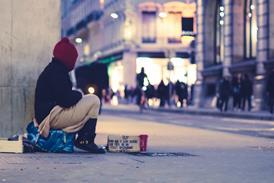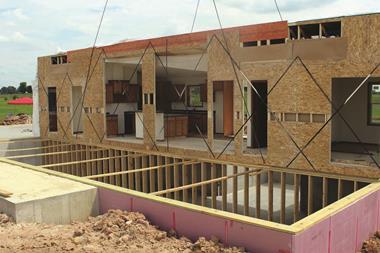Property Week editor Liz Hamson talks to Savills’ director of world research Sophie Chick about how cities can be more sustainable in a post-Covid-19 world.

As Covid-19 throws the future of cities into question, many are embracing concepts such as the slow street movement, which encourages people to walk and cycle rather than use overcrowded public transport or cars, and the 15-minute city, where people can meet most or all of their needs within a short walk or bike ride from home. Both could have a hugely positive impact on the environment – if they take off.
Watch the full video below:


LH: How do you see city living evolving in the wake of Covid-19? Will we see that widely predicted exodus to the suburbs and countryside?
SC: This is not the death of the city that many people have been talking about. Cities have evolved and are incredibly resilient, and although we are seeing a growing trend of more people being interested in moving to rural locations or somewhere with more green space, how long that carries on for remains to be seen.
When the threat of Covid-19 passes, cities will still be there, and cities on a per capita basis are much more sustainable and omit much less carbon per person than you do in a rural location.
LH: Do you see a long-term de-densification occurring?
SC: Cities are forecast to carry on growing and we think they need to be allowed to expand even if that means some of that expansion may well be into parts of the greenbelt. In a way, it will help alleviate some urban dwellers’ fears about lack of green space and help to create more access to green space for everyone.
LH: City centres are a lot quieter as a result of lockdown and government advice to continue working form home if you can. What does this mean for the sustainability agenda?
SC: Home working will continue to play a role in daily life after Covid-19, meaning we are going to see a hybrid model of working from home and in the office. From a sustainability point of view, there really is a trade-off. People working from home don’t have to commute, but on the flip side, particularly in the winter months, people will need to heat their homes more – and heating residential housing stock throughout the UK is a really big area of concern. Around 15% of the UK’s carbon emissions comes from heating homes, so it is something that urgently needs looking at.
LH: How do you see offices evolving in terms of sustainability?
SC: I think offices are much further ahead than the residential market. It is much easier to make changes in an office than within individuals’ homes. You’re more likely to be going into an energy-efficient office than you are if you work from home.
There were worries at the beginning of the pandemic that it would knock sustainability off the agenda, but if anything, I think it’s accelerating the agenda. It’s not just the environment, but social, health and wellbeing factors that are all now being considered even more so than they were previously.
LH: Which of the changes that we are seeing now will be lasting ones?
SC: Since the outbreak of Covid-19, cities around the world have introduced measures to enable people to walk and cycle more: this has become known as the slow streets movement. We have also seen entire roads taken from cars and given to outside dining or other uses and a lot of these changes were just intended to be temporary measures. But more and more of these kinds of use changes are becoming permanent.
That is really important, because if we look at the benefits of moving away from a world where we are reliant on cars, we don’t just see the health benefits of walking and cycling, but the added benefits of having fewer cars on the road in environmental terms.
Covid-19 has demonstrated that we can adapt and innovate in a crisis
Sophie Chick
These changes help local environments and communities to evolve. A lot of people are talking about the 15-minute city, which sees people move away from being reliant on cars and public transport and instead needing to be within walking or cycling distance of local amenities, schools, workplaces and shops – and we are seeing a real interest in this at the moment.
However, what worries me slightly is that car usage in many places across the UK is back up to pre-Covid-19 levels, so this isn’t going to be a quick change. We need the planning and support to make the idea of a 15-minute city a possibility.
LH: Can London really become part of the 15-minute city or slow street movements? And what do we do about the issue of rising car use?
SC: It’s feasible and it probably won’t take that many changes to get us there. It is a matter of making sure that individual centres and communities within London have the amenities they need. There are going to be big changes, especially on the high street, with retail space transforming into residential or office spaces.
But there has got to be some regulation and it is going to take time to do it. In terms of the rise in car use, I think it’s because people don’t have an alternative yet, but give people an appealing alternative and I think they’d use that.
LH: What role do you see regulation playing in accelerating the climate agenda here, so we see some of these policies being implemented?
SC: Regulation is critical and a few years ago London did launch a plan for a circular economy [where reuse and recycling eliminates waste]. But London is still further behind other cities around the world. For example, Amsterdam has a ‘doughnut city’ policy [which aims to keep the inner ring of the city’s needs within an outer ring of what the global environment can sustain] and we can really look and learn from cities like these. Particularly within real estate, I think where the circular economy can have one of the biggest impacts is when we look at construction and concrete.
LH: Are there any examples of circular economies abroad that you think could be a blueprint for London?
SC: Charlotte in the US and Amsterdam, as I’ve mentioned, are small cities from which we could pick out elements to learn from and bring that together to create something that works for London or other cities around the UK.
LH: Over the next few years, what are your hopes, fears and expectations for cities and the climate agenda?
SC: I think one topic we will hear a lot more about is air pollution, because it is not only about the environmental impact, but also the severe health impacts. An ultra-low emission zone has been introduced in London, which has had a big impact in improving air quality and pollution.
I’m positive for the future of cities and the climate agenda. I think Covid-19 has really demonstrated that we can adapt and innovate when we are faced with a crisis and a lot of countries and cities are now using a green recovery as their basis for coming out of an economic downturn.
LH: In a few years’ time, where do you think London will be in sustainability terms compared with other major cities?
SC: London recently introduced plans to get to where it needs to be, but there are a lot of things that can hinder progress in terms of it being a very old city, with one of the oldest transport networks in the world. However, there is a real desire for change, so I think London can be pioneering in a lot of ways.

































No comments yet